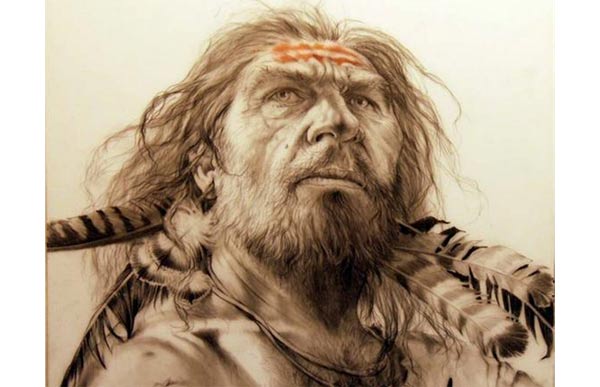Oldest-known Human genome sequence sheds light on interbreeding with Neanderthals
A new study published in the journal Nature has revealed the DNA results from a 45,000-year-old leg bone from Siberia, producing the oldest genome sequence ever carried out for Homo sapiens – nearly twice the age of the next-oldest known complete modern human genome. The results have helped pinpoint when Homo sapiens first interbred with Neanderthals, and adds more pieces to the puzzle of ancient human migration across the world.
The ancient leg bone was found in 2008 by a Russian artist and mammoth ivory collector, Nikolai Paeritov, who found the remains on the left bank of the river Irtysh near the settlement of Ust’-Ishim in western Siberia. The human femur was sent to the Max Planck Institute for Evolutionary Anthropology in Leipzig, Germany, where testing revealed that the bone dated back 45,000 years and, incredibly, still contained well-preserved DNA, enabling them to sequence the genome to the same degree of accuracy as that achieved for modern-day samples.

The River Irtysh, Siberia. (Wikimedia Commons)
The results of the sequencing revealed that the DNA of the “Ust’-Ishim Man”, as he has come to be called, contained 2% DNA from Neanderthals, roughly the same proportion that can be found in modern Europeans today. This reveals that interbreeding between Neanderthals and modern humans must have occurred prior to the age of the Ust’-Ishim Man. While previous estimates suggested the interbreeding may have occurred as early as 36,000 years ago, scientists have now revised their estimates to between 50,000 and 60,000 years ago.

45,000-year-old femur bone from Ust’-Ishim has shed new light on Neanderthal interbreeding with modern humans. (Sergei Melnikov)
The research team also compared the genetic sequence of Ust’-Ishim man with the genomes of 50 different groups of modern humans, Neanderthals, and Denisovans. The results indicate that this man was equally closely related to present-day Asians and to early Europeans. This suggests that the population to which Ust’-Ishim man belonged diverged from the ancestors of present-day Europeans and Asians before, or around the same time, that these two groups separated from each other.
The research team expressed the hope of finding and sequencing much older human DNA, which may help piece together the very complex human family tree.
Featured image: Artist's impression of a Neanderthal with feathers (by Mauro Cutrona)


















Comments
Okay, so they found some evidence but what about more? The amount of information that was learned from this one bone is amazing....but I want more!
love, light and blessings
AB
The oldest fosils were found in Maramures,Romania!!!
Thats an interesting question about the haplo group I would like to know that too.
Nisa Carroll Burkay
A lot of this goes along with Japanese parahistory as expressed by Avery Marrow in his book The Sacred Science of Ancient Japan. Very interesting read.
Peace and Love,
Ricky.
What haplogroup does he belong to? Mitochondrial dna? What dies 23 and me .com say about this.
Pages